Browse using the new Vinous website now. Launch →
Printed by, and for the sole use of . All rights reserved © 2015 Vinous Media
Roberto Voerzio – Past, Present and Future: 1988-2008
Part One – The Early Wines: 1988-1993
1988 Roberto Voerzio Barolo Cerequio 92
1989 Roberto Voerzio Barolo Cerequio 95
1989 Roberto Voerzio Barolo Brunate 96
1990 Roberto Voerzio Barolo La Serra 97
1990 Roberto Voerzio Barolo Brunate 95
1991 Roberto Voerzio Barolo Brunate 91
1992 Roberto Voerzio Barolo Cerequio 92
1992 Roberto Voerzio Barolo La Serra 90
1993 Roberto Voerzio Barolo La Serra 95
Part Two – A Time of Transition: 1996-1998
1996 Roberto Voerzio Barolo Brunate 94
1996 Roberto Voerzio Barolo Cerequio 91
1997 Roberto Voerzio Barolo Brunate 93
1998 Roberto Voerzio Barolo Riserva Vecchie Viti dei Capalot e delle Brunate 92
1998 Roberto Voerzio Barbera d’Alba Vigneto Pozzo dell’Annunziata 90
Part Three – A Mature Style Emerges: 1999-2004
1999 Roberto Voerzio Barolo La Serra 95
2000 Roberto Voerzio Barolo Rocche dell’Annunziata/Torriglione 96
2000 Roberto Voerzio Barolo Cerequio 97
2000 Roberto Voerzio Barolo Sarmassa di Barolo 98
2004 Roberto Voerzio Barolo Riserva Vecchie Viti dei Capalot e delle Brunate 96
Part Four – Current Releases: The 2005 and 2006 Barolos
2005 Roberto Voerzio Barolo La Serra 94
2005 Roberto Voerzio Barolo Brunate 95
2005 Roberto Voerzio Barolo Cerequio 94
2005 Roberto Voerzio Barbera d’Alba Vigneto Pozzo dell’Annunziata 94
2006 Roberto Voerzio Barolo Sarmassa di Barolo 96+
2006 Roberto Voerzio Barolo (Riserva) Vecchie Viti dei Capalot e delle Brunate 96
2006 Roberto Voerzio Barolo Cerequio 97
2006 Roberto Voerzio Barolo Brunate 96+
2006 Roberto Voerzio Barolo Rocche dell’Annunziata/Torriglione 95
Part Five – Looking Ahead: The 2007 and 2008 Barolos
2007 Roberto Voerzio Barolo La Serra (90-93)
2007 Roberto Voerzio Barolo Brunate (94-97)
2007 Roberto Voerzio Barolo Cerequio (95-98)
2007 Roberto Voerzio Barolo Rocche dell’Annunziata/Torriglione (94-97)
2007 Roberto Voerzio Barolo (Riserva) Fossati (91-94)
2007 Roberto Voerzio Barolo Sarmassa di Barolo (94-97)
2007 Roberto Voerzio Barolo (Riserva) Vecchie Viti dei Capalot e delle Brunate (93-96)
2007 Roberto Voerzio Merlot 93
2007 Roberto Voerzio Barbera d’Alba Riserva Vigneto Pozzo dell’Annunziata 95
2008 Roberto Voerzio Barolo Cerequio (94-97)
2008 Roberto Voerzio Barolo Brunate (94-97)
Roberto Voerzio’s Barolos are some of the richest, deepest and most texturally beautiful wines readers will come across. This incredible tasting, which spanned 20 vintages and nearly 40 wines, provided a once in a lifetime opportunity to look at the evolution of one of the world’s most talented and passionate winemakers. I was struck with nearly all the wines I sampled, but in many ways it is the Barolos from the smaller, forgotten vintages that made the deepest impression. The majority of these wines were tasted during a visit to the winery in November 2009, while a few additional bottles came from my cellar.
Roberto Voerzio had a clear idea of the wines he wanted to make from the outset, but he got a later start than most of his contemporaries because he spent the first years of his career working alongside his brother Gianni before striking out on his own in 1987. Over the years, Roberto Voerzio acquired parcels in La Morra’s finest sites, giving him a collection of grand cru vineyards matched by few growers. Despite all of his success, Voerzio remains an essentially simple, down to earth person with a continuous drive to improve that is rare, even in Piedmont. Today Voerzio makes as many as seven single-vineyard Barolos. Voerzio’s fanaticism informs all aspects of production, and he only bottles his wines when he is completely happy with them, so it is the rare vintage when all seven Barolos are released. A luxury Barbera from the Pozzo vineyard in the Annunziata district of La Morra made with the same rigorous low yields as the Barolos and a more affordable set of wines including a Dolcetto, Barbera and Langhe Nebbiolo round out the range.
Though often lumped in with the modern school in Barolo, Voerzio takes his greatest inspiration from the masters of the traditional school, including Bruno Giacosa, Giovanni Conterno and Beppe Rinaldi, all men he still speaks about with the highest respect and admiration. I was amazed to see Voerzio open a number of reference-point Barolos from these producers at the end of this tasting; a decidedly high risk proposition, given the icon status of those bottles. I can’t think of another producer – particularly one with a relatively short track record – so willing to put everything on the line in openly comparing his wines to the acknowledged masterpieces of the region.
Voerzio is best known for fanatically low yields, which clearly inform his Barolos and is a major reason his early vintages remain fresh and intact to this day, a quality shared by many of his wines from lesser vintages as well. Twenty years ago the idea of green harvesting was still radical in Piedmont, a poor, agrarian region where cutting of bunches of grapes was seen as the equivalent of throwing money away. Voerzio was convinced otherwise and followed his instincts by pursuing a radical approach to low yields. Voerzio cuts entire bunches off his plants, the point the rows between his vineyards are literally strewn with fruit. Bunches that remain are meticulously trimmed, particularly towards the bottom and the sides of the bunch, where the harsher tannins are believed to lie. The typical triangular Nebbiolo bunch is transformed into a small, roundish shape, and yields are brought down to level previously never seen in Piedmont.
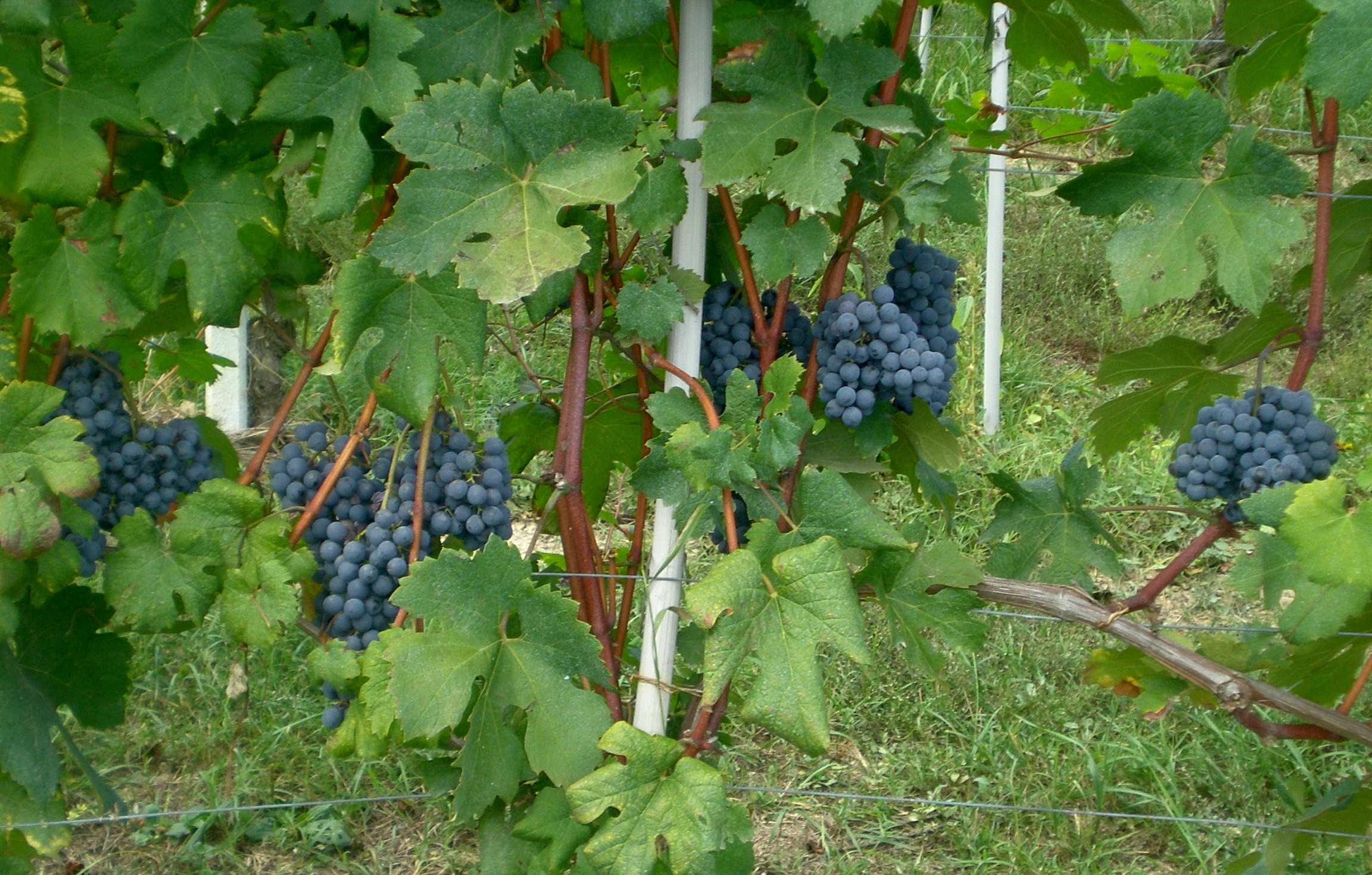
Part One – The Early Wines: 1988-1993
Voerzio’s Barolos from the late 1980s and early 1990s capture a compelling balance between a modern concept of vineyard management and a fairly traditional style of vinification. Although Voerzio was in his mid-30s at the time, it is nevertheless remarkable to consider that Voerzio had been on his own for just a few years when he made these magical Barolos. The 1988, 1989 and 1990 Barolos were vinified in stainless steel, where they also underwent malolactic fermentation prior to being aged in equal parts cask and barrique, an approach Voerzio returned to with his 2008s after having moved exclusively to French oak in 1994. All of these wines remain in great shape, with notable integrity in their colors and flavors. Most surprising of all are some of the wines from the lesser years of the early 1990s that are still wonderfully pure and intact. It is perhaps those wines that speak most eloquently to Roberto Voerzio’s stature as one of Italy’s very finest producers.
The 1988 Barolo Cerequio is full of tobacco, spices, plums and prunes. Though fully mature, this mid-weight Barolo has aged exceptionally well and still shows gorgeous delineation in its perfumed, fresh fruit. 92/Drinking window: 2010-2013. Voerzio’s 1989 Barolo Cerequio reveals gorgeous inner perfume, along with notable density and richness in its fruit. Aromatically, it is perhaps a touch more forward than it is on the palate, and ideally the wine is best enjoyed over the next few years. Soft, silky tannins frame an impeccable finish. 95/Drinking window: 2010-2014. The 1989 Barolo Brunate is a grand, sweeping wine endowed with layers of dark, baritone fruit. Rich, deep and sensual, the Brunate impresses for its textured, layered fruit and great length. Sweet spices and leather linger on the elegant finish. 96/Drinking window: 2010-2014. The 1990 Barolo La Serra has aged exceptionally; in fact it is fresher than the 1989 Barolos I tasted alongside it. The wine reveals gorgeous purity in a mélange of red fruits and flowers that comes together on the palate in stunning style. As beautiful as the 1990 Barolo La Serra is today, it clearly has enough freshness to last another ten years. This is an extraordinary, towering Barolo from Roberto Voerzio. 97/Drinking window: 2010-2020. The 1990 Barolo Brunate is representative of the vintage in its dark, opulent fruit. The dark-hued tones of Brunate are ever-present while the warm growing season has given the wine soft, open tannins. The generosity of the fruit carries through to the enveloping, caressing finish. The wine’s sense of harmony is completely captivating. 95/Drinking window: 2010-2020.
The 1991 Barolo Brunate, from a long-forgotten harvest, is nothing short of a miracle in a glass. Subtle, earthy Pinot-like aromas lead to dark red fruit, cedar, tobacco and spices. The color is remarkably fresh, only the slightly coarse tannins betray the quality of the vintage. This is an incredibly finessed and beautifully balanced Barolo from Roberto Voerzio. 91/Drinking window: 2010-2015. None of Piedmont’s vintages of the early 1990s is highly regarded, and among these, 1992 is widely considered the worst, as the growing season was very damp and cold. I have tasted Voerzio’s 1992 Barolo Cerequio on a number of occasions and never been anything less than deeply impressed. This is a gorgeous Barolo, that’s pretty much all there is to it. Still quite fresh, the wine offers terrific length and polish in its perfumed red fruit. It is a wine of remarkable purity and class that, if perfectly stored, can still drink well for at least a few more years. If I hadn’t tasted it myself (several times) I would never have believed a Barolo from such poor vintage could be so intact and fresh at nearly 18 years of age!92/Drinking window: 2010-2014. The 1992 Barolo La Serra is quite a bit further in its evolution than the Cerequio in this rain-plagued vintage. Truffles, smoke, mushrooms, worn-in leather and licorice add complexity to a delicate core of bright red fruit. Though still marvelously intact, the 1992 La Serra is also fully mature and has no further upside at this stage. Still, it is impressive. 90/Drinking window: 2010-2012.
The 1993 Barolo La Serra is simply beautiful. A Burgundian expression of fruit is supported by powerful, decidedly Piedmontese sense of structure as this dark, intense Barolo opens up in the glass. I am amazed by the integrity and sheer richness of this fruit-driven Barolo. The finish tapers off just a touch at the very end but that is splitting hairs at this level. If well-stored, the 1993 Barolo La Serra has more than enough freshness and density to develop beautifully for another decade. It is superb. 95/Drinking window: 2010-2020.
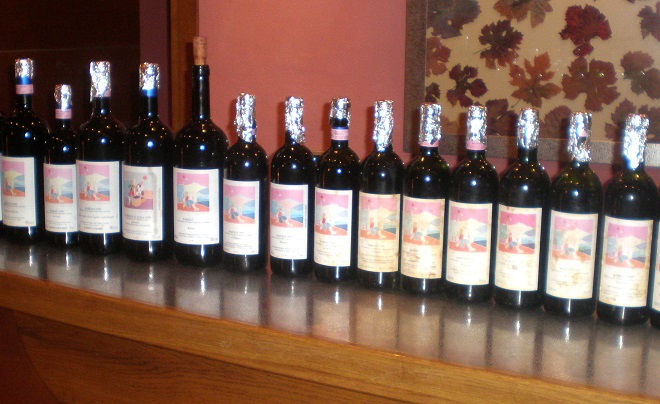
Part Two – A Time of Transition: 1996-1998
The years spanning 1996 through 1998 are arguably the most experimental in Voerzio’s career. By this time Voerzio had moved exclusively to French oak for the aging of his Barolos. Vintage 1996 was the first and only year in which the malolactic fermentations were also carried out in French oak. Even today, the wines from this period are excessively heavy and oaky. It is interesting to note that after 1996 Voerzio returned to steel for the malolactic fermentations, which in my view seems better suited to his wines. His 1997s and 1998s have never been fully convincing (relative to top vintages) and this is my least favorite period in Voerzio’s history. Voerzio believes the wines are simply in an ‘in-between’ phase, which is to say neither young nor mature, which accounts for their awkward showing, but in multiple tastings over the years I have never found these vintages as complete as those that preceded and followed them.
The 1996 Barolo Brunate is a deep, dark wine loaded with vibrant dark cherries. This is an especially rich, powerful Barolo from Voerzio, but the French oak dominates throughout and contributes to a sense of aggressiveness that comes through on the tannins. Still, the Brunate has just enough stuffing to provide a measure of balance. This is the first and only vintage in which the malolactic fermentation was carried out in barrel, an approach that, at least in this harvest, doesn’t seem to have worked particularly well. 93/Drinking window: 2011-2021. The 1996 Barolo Cerequio is another big wine. Where Brunate often delivers muscle, Cerequio is all about finesse and elegance, qualities that are mostly lost because of the heavy oak treatment. Earthiness and tobacco dominate the flavor profile of this somewhat rustic Barolo. 90/Drinking window: 2011-2021.
The 1997 Barolo Brunate (magnum) is a dark, imposing wine loaded with dark fruit, earthiness and French oak. This is an especially powerful, brooding Brunate that retains a certain element of rusticity and roughness that is out of character here, at times recalling Syrah-like notes. The wine is quite a bit fresher in magnum than in standard 750-ml bottle and should continue to age nicely on its core of dense fruit. Readers should note that magnums of this wine were never released commercially. 93/Drinking window: 2020-2017.
Voerzio’s 1998 Barolo Riserva Vecchie Viti dei Capalot e delle Brunate (magnum) is powerful and dramatic in its sweeping expression of dark fruit, menthol and grilled herbs. Balsamic notes that are typical of this bottling add complexity on the close. Still, there is something about the tannins that isn’t quite as polished as it usually is. Drinking window: 2010-2020. The 1998 Barbera d’Alba Riserva Vigneto Pozzo dell’Annunziata (magnum) comes across as relatively small-scaled. There is good depth to the fruit, but not the compelling richness, detail and vibrancy that defines the very best vintages. This is one bottle that is not showing particularly well today, and although it is still full of life, at 12 years of age I have to wonder if the wine will ever find its inner sense of harmony. Drinking window: 2010-2016.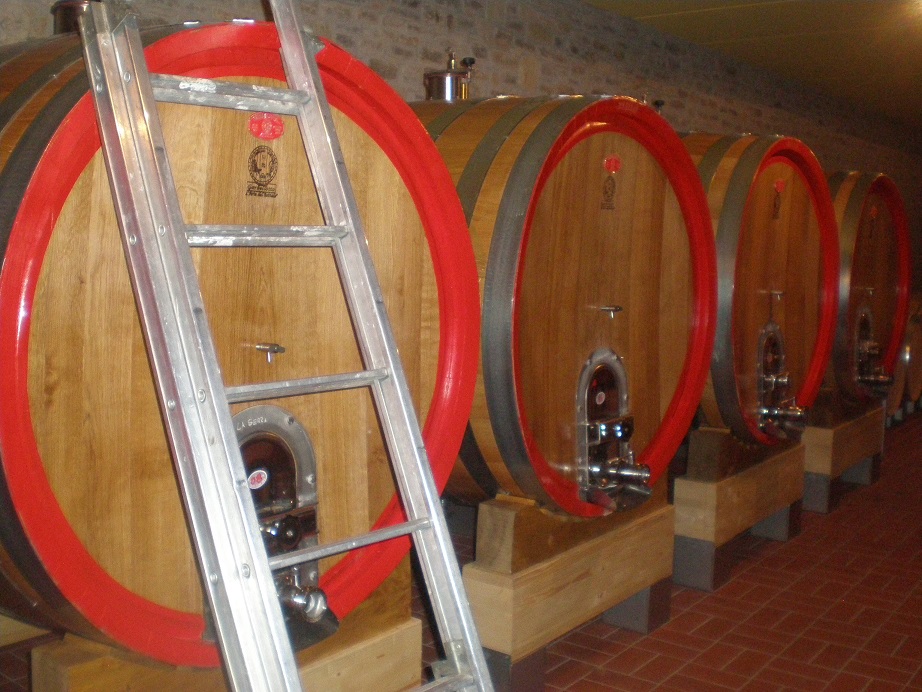
Part Three – A Mature Style Emerges: 1999-2004
Beginning in 1999 Voerzio’s Barolos seem to acquire an additional measure of refinement I have always admired. The wines are well-represented in my cellar, and I have never been disappointed. To be sure, these are rich, concentrated Barolos, but around this time the integration of the French oak improved and the Barolos began to take on elements of silkiness that balance the sheer opulence in the fruit.
The 1999 Barolo La Serra has always been a magnificent wine as it is again tonight. I have often felt this Barolo and Voerzio’s other 1999s, signal the first move towards a more elegant and finessed style. Sweet, floral aromatics meld into vibrant layers of mineral-infused dark cherries as the wine opens up in the glass. This young, sweeping Barolo is simply magnificent and one of the very finest La Serras Voerzio has made over the course of his career. Though delicious today, the wine promises to drink beautifully for another 15-20 years. It is superb. 95/Drinking window: 2010-2025.
The 2000 Barolo Rocche dell’Annunziata/Torriglione, tasted from magnum, bursts from the glass with an articulate, kaleidoscopic bouquet that is mesmerizing. This extraordinary wine tastes pretty much like it did when I first tasted it from barrel in 2002! Ripe, silky tannins frame a core of intensely floral red fruit that flows through to a long, exceptionally refined finish that lasts forever. Simply put, this is a magical bottle of Barolo. Sadly, the magnum format was not released commercially. 96/Drinking window: 2012-2022. The 2000 Barolo Cerequio, from my cellar, is breathtakingly beautiful. The wine possesses dazzling richness and concentration, with quite a bit of muscle for a Barolo from this site. Nevertheless, the Cerequio remains light and graceful on its feet as expressive, nuanced aromatics accompany the fruit through to the long finish. The oak is beautifully balanced and everything about this wine speaks eloquently to harmony. This is one of my all-time favorite Barolos from Roberto Voerzio. 97/Drinking window: 2010-2025. Voerzio’s 2000 Barolo Sarmassa di Barolo, from magnum, shows more weight than the Rocche, along with a darker tonality of red fruit that caresses the palate with seamless power and elegance, Here, too, the aromas are simply breathtaking in dimension and expressiveness, while the wine reveals superb power and muscle, yet with a remarkable sense of harmony that keeps things in balance. This is a towering, majestic Barolo from Roberto Voerzio. 98/Drinking window: 2012-2025.
The 2004 Barolo Riserva Vecchie Viti dei Capalot e delle Brunate, tasted from magnum, reveals incredibly density, energy and finesse. The wine has begun to develop quite a bit of complexity since I last tasted it and also appear to be putting on additional weight. A deeply expressive bouquet of truffles, licorice and flowers leads to dark, mineral-laced fruit. This is a great showing for the Capalot. Recent bottles of the 2004 Cerequio and Sarmassa have also lived up to the glowing scores I bestowed upon them a few years ago. 96/Drinking window: 2012-2029.
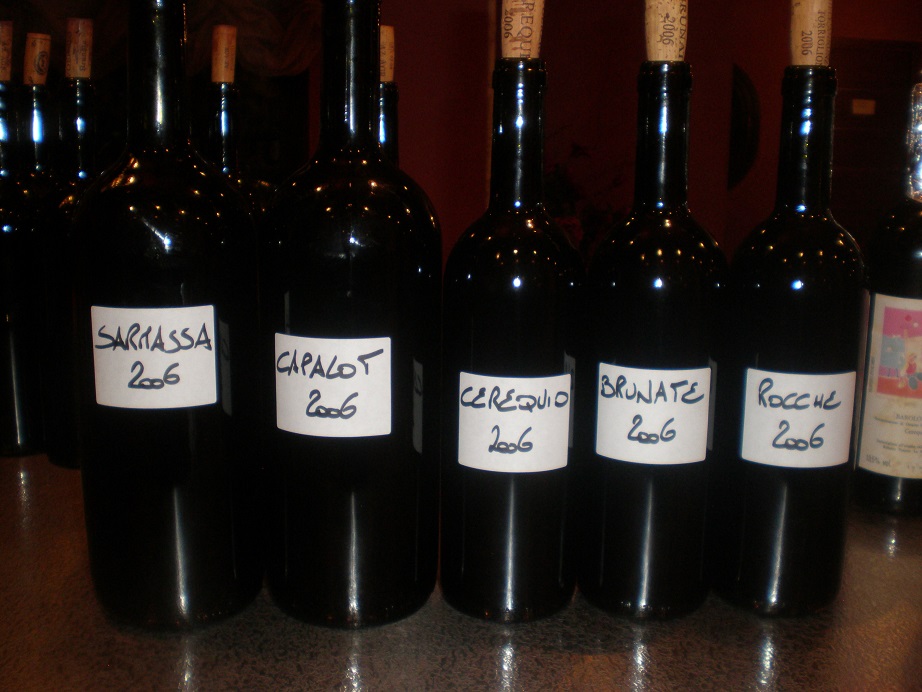
Part Four – Current Releases: The 2005 and 2006 Barolos
Vintage 2005 is mixed for Roberto Voerzio. There are no Barolos from Sarmassa, Capalot or Rocche dell’Annunziata as the wines did not meet Voerzio’s exacting standards of quality. Small defects that are common in cool vintages could have been addressed with the use of commercial yeasts and other additives, but Voerzio eschews anything that gets in the way of his stripped-down, non-interventionalist approach in the cellar. Voerzio also had damage from hail in the upper reaches of La Serra, and his wine from that vineyard was enough to fill one measly 12-hectoliter tank. As partial compensation, there will be a Riserva from Fossati/Case Nere which will be released somewhere around 2015. In today’s business-first world it is a sign of a serious commitment to quality when a producer consciously chooses not to bottle wines over putting a less than perfect product on the market. The Barolos that did make it into bottle are among the best 2005s, but like all wines in this vintage, they are relatively slender and lithe vis-à-vis the 2006s and 2007s.
The 2005 Barolo La Serra, which was so sexy and expressive upon release, seems to have shut down a touch over the last year. It is a lovely, focused Barolo built on a core of fresh, floral red fruit that carries through a long, delicate finish. The wine’s balance and class are unmistakable. 94/Drinking window: 2015-2030. The 2005 Barolo Brunate, on the other hand, has begun to come out of its shell and is incredibly expressive. Layers of fresh, vibrant Brunate fruit emerge from this dark, sensual Barolo. The depth and richness are impressive for a 2005, while the finish is strikingly beautiful. This is shaping up to be magnificent. 95/Drinking window: 2015-2030. The 2005 Barolo Cerequio shows gorgeous balance and transparency in its perfumed red fruit. The wine continues to gain weight as it sits in the glass, but like all of Voerzio’s 2005s, it remains somewhat restrained in style, with less of the inner perfume and rich texture that defines the very finest years. 94/Drinking window: 2015-2030. Voerzio’s 2005 Barbera d’Alba Riserva Vigneto Pozzo dell’Annunziata flows with layers of fresh, mineral-infused dark fruit. Sweet, round and impeccably pure, the wine offers exceptional balance and gorgeous overall harmony. 94/Drinking window: 2015-2025.
I saw Roberto Voerzio in September 2006 and toured his vineyards just as the Nebbiolo harvest was about to begin. The fruit was absolutely gorgeous, and fortunately Voerzio was spared any significant damage from hail. Still, Voerzio was not entirely happy with his Barolo La Serra and Merlot, and opted not to bottle those wines. Voerzio is always one of the first growers to harvest and in 2006 all of the Nebbiolo was in the cellar by the second week of September.
Voerzio’s 2006 Barolo Sarmassa di Barolo (magnum) literally explodes on the palate with red fruit, flowers, spices and mint. Still tightly wound, the 2006 is an especially powerful Sarmassa di Barolo that isn’t quite as accessible as it often is at this stage. Still, the wine’s bouquet, purity of fruit and persistence all augur for a long life of magnificent drinking. 96+/Drinking window: 2016-2026. The 2006 Barolo Riserva Vecchie Viti dei Capalot e delle Brunate (magnum) is a dark, sensual beauty. Ripe fruit, violets, licorice, menthol and pine are some of the nuances that are woven into the frame of this rich, expansive Barolo. The wine reveals tons of depth and dimension, but then shuts down rather quickly in the glass. The 2006 Barolo Vecchie Viti dei Capalot e delle Brunate is one of the more imposing wines in this line up of 2006 Barolos, but it is pure magic in a glass. 96/Drinking window: 2016-2031. The 2006 Barolo Cerequio opens with an utterly beguiling, captivating bouquet that leads to ripe red fruit, flowers, minerals and spices, all framed by sweet, silky tannins. Aromatics, textural elegance and freshness come together in this energetic, vivid Barolo. The finish is exceptionally long, pure and fresh, which suggests the wine will age gracefully for many years. The 2006 Barolo Cerequio is emerging as one of the finest wines in this important vintage. Simply put, it is awesome! 97/Drinking window: 2016-2026. The 2006 Barolo Brunate flows from the glass with a powerful, brooding expression of fruit. As is often the case, the Brunate presents dark, burnished tones that are a marvel to behold. The wine’s stunning depth and richness caress the palate all the way through to a mineral-infused harmonious finish. This is another fantastic Barolo from Roberto Voerzio loaded with vintage and vineyard character. It is not to be missed. 96+/Drinking window: 2016-2031. The 2006 Barolo Rocche dell'Annunziata/Torriglione reveals a rich, kaleidoscope of perfumed aromas that meld seamlessly into a palate of ripe red fruit. The tannins are silky and exceptionally refined, yet the wine possesses plenty of muscle, depth and richness, albeit in a style that favors elegance over power. Along with the Cerequio and the Sarmassa, the Rocche is one of Voerzio’s more feminine Barolos. In 2006, it is drop-dead gorgeous. Patience is required, but readers who are able to lovingly cellar this wine will not be disappointed. 95/Drinking window: 2016-2031.
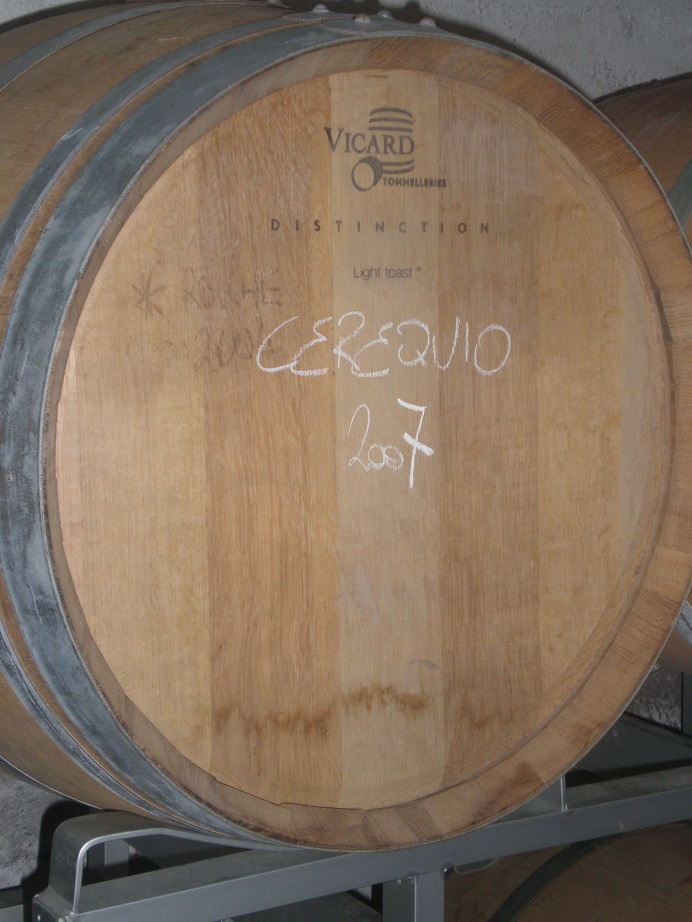
Part Five – Looking Ahead: The 2007 and 2008 Barolos
Voerzio’s 2007s are
shaping up to be stratospheric; in fact 2007 may turn out to be one of his very
finest vintages. The wines have always been spectacular from barrel and they
seem to get better and better each time I taste them. Vintage 2007 is also the first
year since 2004 that Voerzio produced his entire range. All of these 2007 Barolos
were tasted from oak, while the Merlot and Barbera Pozzo were tasted from
bottle. Beginning with his 2008s, Voerzio is aging his Barolos in a
combination of roughly equal parts large cask and French oak, an approach he
used for his early vintages through 1993. I
was only able to sample two 2008s, both from cask only, but they were
breathtakingly beautiful. These will be fascinating wines to follow over the
coming years. I have not provided maturity dates for the 2007s and 2008s as the
wines were taken from single barrels and were therefore not final blends.
The 2007 Barolo La Serra is sweet, sensual and utterly alluring, with a perfumed core of red fruit that blossoms on the palate. Acidity, fruit and structure are all beautifully balanced. (90-93). Voerzio’s 2007 Barolo Brunate emerges from the glass with super-ripe fruit, kirsch, flowers and hard candy. Bright, high-toned aromatics meld seamlessly into an intense, opulent core of fruit. This kaleidoscopic Barolo is hugely promising. (94-97). The 2007 Barolo Cerequio is extraordinary for its finesse. Despite the wine’s richness the Cerequio remains one of the most elegant Barolos in this flight. The finish is exceptionally long and pure. (95-98). The 2007 Barolo Rocche dell’Annunziata/Torriglione is a bit more taut and focused than the Cerequio yet it too reveals tons of finesse and class. (94-97). The estate’s 2007 Barolo (Riserva) Fossati/Case Nere which will likely be issued as a Riserva, is one of the more linear, tight wines in this vintage. The fruit shows lovely fragrance and intensity in a focused, driven style. (91-94). Roberto Voerzio has another jewel on his hands with the 2007 Barolo Sarmassa di Barolo. Rich, sensual and inviting, this captivating Barolo covers every inch of the palate with layers of fruit that lead to a long, sensual finish. It is an utterly beguiling Barolo of the highest level. (94-97). Voerzio’s 2007 Barolo (Riserva) Capalot Vecchie Viti dei Capalot e delle Brunate is darker and richer than the Sarmassa, with powerful dimensions to its fruit and rich, deep layers of complexity. Balsamic notes meld into flowers that then fold into waves of dark fruit. The round finish hovers on the palate for an eternity. This, too, is shaping up to be a colossal effort from Roberto Voerzio. (94-97). The 2007 Merlot is rich, round and sensual in its varietal fruit before the signature Piedmontese structure takes over on the mid-palate and finish. This is a beautiful vintage for the Merlot here, and indeed this is one of the few truly intriguing wines from international varieties being made in Piedmont. 93/Drinking window: 2012-2027. The 2007 Barbera d’Alba Riserva Vigneto Pozzo dell’Annunziata is a touch closed in on itself, and the wine comes across as rather tight. Still, the finesse and silkiness of the tannins is there, and the wine’s length is phenomenal, so I am confident this shy, introspective wine will emerge over the next few years. Today, it is very Barolo-like in its reticence. Though delicious upon release, the Barbera Pozzo is a wine that is proving to age at a glacial pace, which is in some part a result of the magnum-only format. A recent magnum of the 2000, while exceptional, was still on the young side! 95/Drinking window: 2017-2027.
The 2008 Barolo Cerequio (from cask) is just classic Cerequio. Floral red berries waft from the glass as this captivating, ethereal Barolo shows off its pedigree and class. This is a highly promising Barolo. (94-97). The 2008 Barolo Brunate (from cask) is all muscle, minerals and iron, with a powerful core of dark fruit that impresses for its depth and volume. It, too, is a wine of significant potential. (94-97).
-- Antonio Galloni
